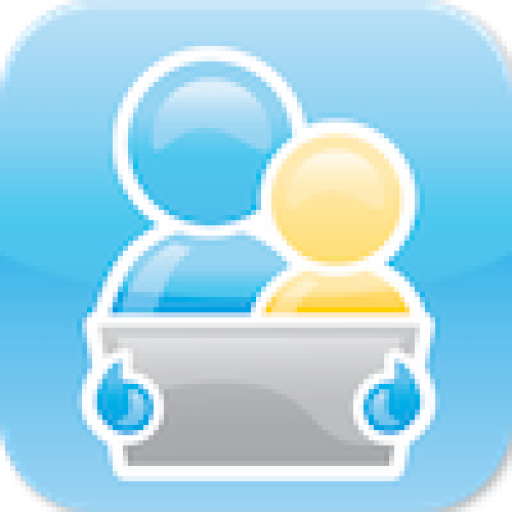This blog post has been updated. Please see the new entry at http://www.janefarrall.com/blog/2013/09/29/how-do-i-use-a-switch-with-an-ipad-ios-7-overview/
Over the last four weeks, as I have been spending time in schools and giving workshops, one of the most common questions I have had is “How do I use a switch with an iPad?”. Talking with Alex Dunn from Inclusioneers on Twitter, this is also one of the most common questions she gets asked as well!
For this reason, Alex and I decided to collaborate on a Switch Accessible Apps for iPad resource – listing all of the switch accessible Apps that we are aware of and their switch and scanning options. Hopefully this resource will help people out with the information they need about this topic – but since this is one of the most common questions I’m being asked I also thought it was an appropriate topic for my first blog post on my new blog!

Firstly, when I talk about switch access, I specifically mean an external switch which someone can press to make a selection in the App running on an iPad or iPhone (or an App which allows me to use the iPad screen as a switch). Switches come in all different shapes and sizes. To read more about switches and switch access click here.
Switch access to an iPad is currently limited to specific Apps. Each App developer must include the code that offers switch access as they develop the App. As things stand, it is not possible for you to use a switch to leave an App or to move between Apps – switch access is in-App only. Hopefully this is going to change in the near future. Recently, we have seen the development of the iPortal which enables joystick control of the whole iPad using VoiceOver. In addition, the new AssistiveTouch feature in iOS5 looks like it will provide potential for overall alternative access to the iPad at some stage.
But back to the current situation…..
In addition to a switch accessible App, you also need to have an iPad switch interface. Currently, there are three Bluetooth switch interfaces available, and one which plugs into the 30-pin dock connector port on the iPad. Any of the switch interfaces which connect via Bluetooth will reduce the iPad’s battery life and also may ‘lose’ the Bluetooth connection intermittently. Some people find this to be a problem, but others don’t. The interface which connects via the iPad port has the limitation that you are unable to connect anything else to the port while it is connected – which means that I am unable to charge the iPad or connect it to a VGA monitor while I am using the switch.
RJ Cooper has two different iPad switch interfaces available. The Bluetooth Super Switch connects to the iPad via Bluetooth as the name implies! The interface itself functions as a switch and there is also a switch port to connect a second switch. The interface is rechargeable from any USB port.
The Air-Turn BT-105 is a small interface with two switch ports – allowing the user to connect one or two switches. This also connects via Bluetooth and is marketed as the Bluetooth Switch Interface by RJ Cooper and as the SwitchBox by Therapy Box.This interface is also rechargeable from any USB port.

The Blue2 from AbleNet is the third Bluetooth option. This interface has two inbuilt switches (in the form of the two pedals on the front) and also has two switch ports which can replace the two pedals. This interface requires 2AA batteries to run – which works better for some people than recharging – and the batteries have a long run time.

The it-iClick is the fourth switch interface for the iPad – and is the newest option. I haven’t had the pleasure of using one of these as yet, but I’m looking forward to using it. This interface plugs into the 30-pin dock connector port on the iPad, as you can see from the picture above. Part of the Simply Works range from Inclusive, it is designed to work with up to 6 Simply Works transmitters, such as the it-Switch. This interface takes power from the iPad so it doesn’t require recharging or batteries – although the wireless switches that work with it do.
Now that I’ve covered, the different switch interfaces available, the next question is generally – so which Apps can I use? And this is where the new resource that Alex and I have put together help. The resource lists all the apps that we are currently aware of that have switch access, details the type of switch access (e.g. cause and effect, 1 switch scanning, 2 switch scanning, visual scanning, auditory scanning) and also lists which switch interface(s) the App is compatible with.
Click here to download the Switch Accessible Apps resource. You can also go to my website www.janefarrall.com at any stage and download it from the iPads and Apps section. Alex and I would like to keep this updated – so if you find any Apps missing or have any comments please let us know!


katilea
janefarrall
Jeanette Davies
janefarrall
Melissa Campbell
janefarrall
Carole
Jane
Jojo
Pingback: The APPlicator – switch access to MORE apps and music too! | Jane's Blog
Tanya Linden
Jane
Charles Fox
Jane
Gretta
Jane
patricia milbrath
Jane
Tess Kruser
Jane
Tess Kruser
Austin Keogh
Jane
Emily
Jane
Lucy
Jane
Pingback: The APPlicator – switch access to MORE apps and music too! | Jane Farrall Consulting
Caitriona Tynan